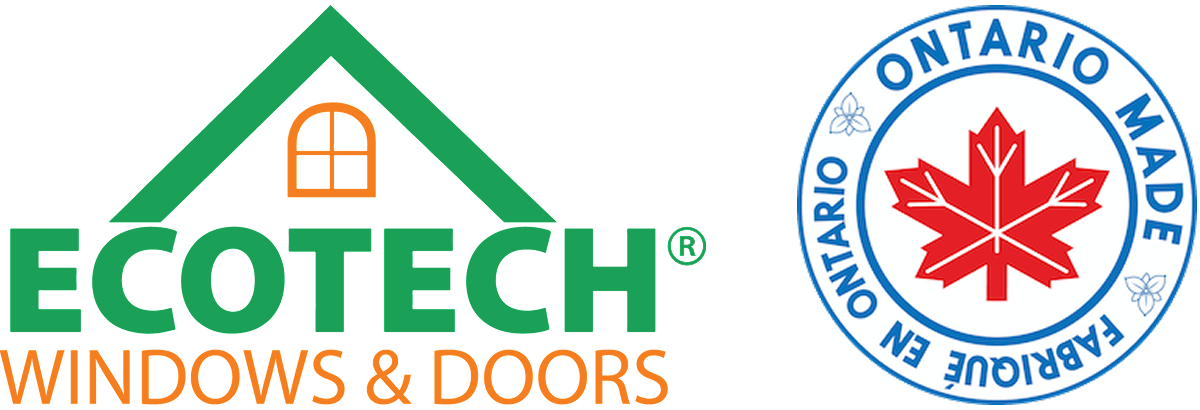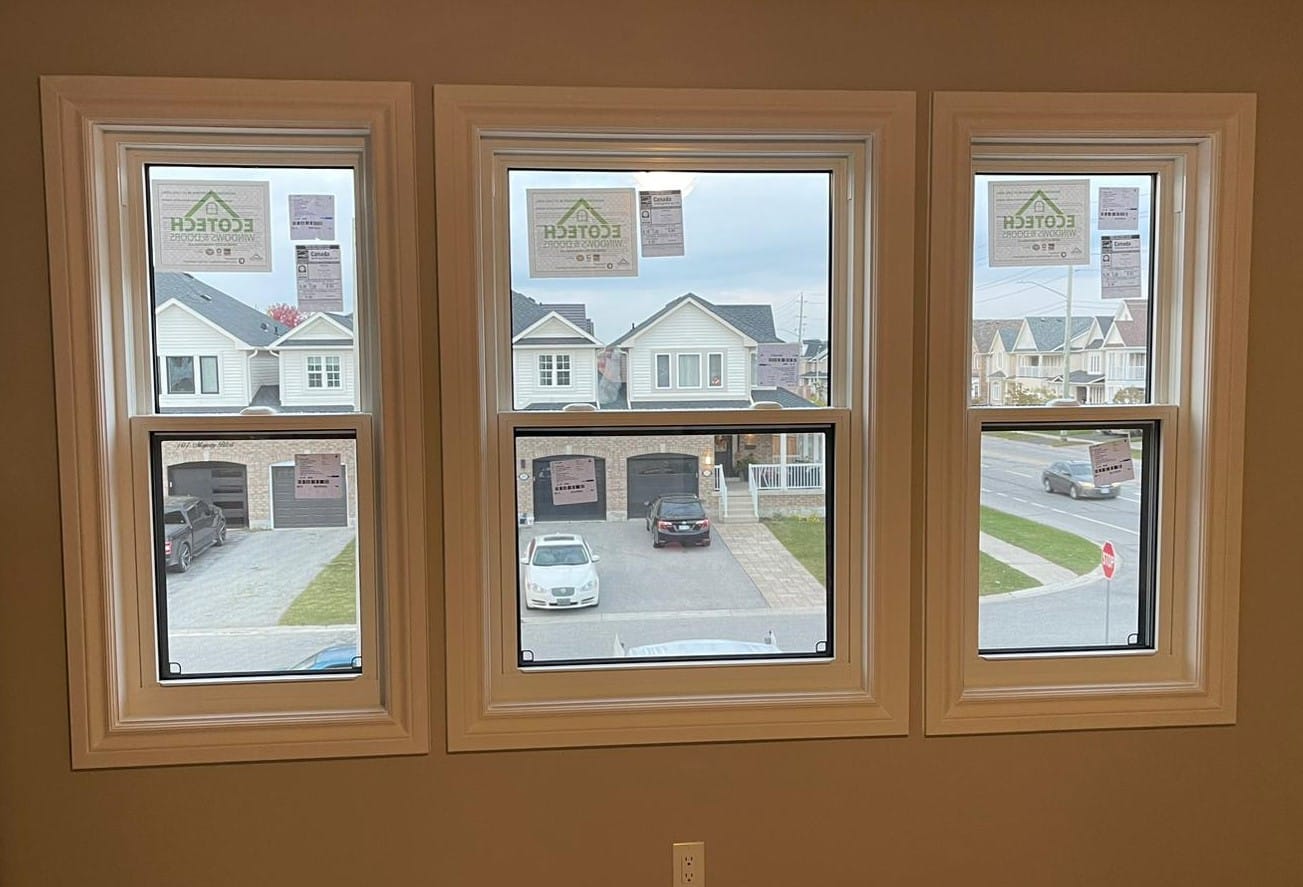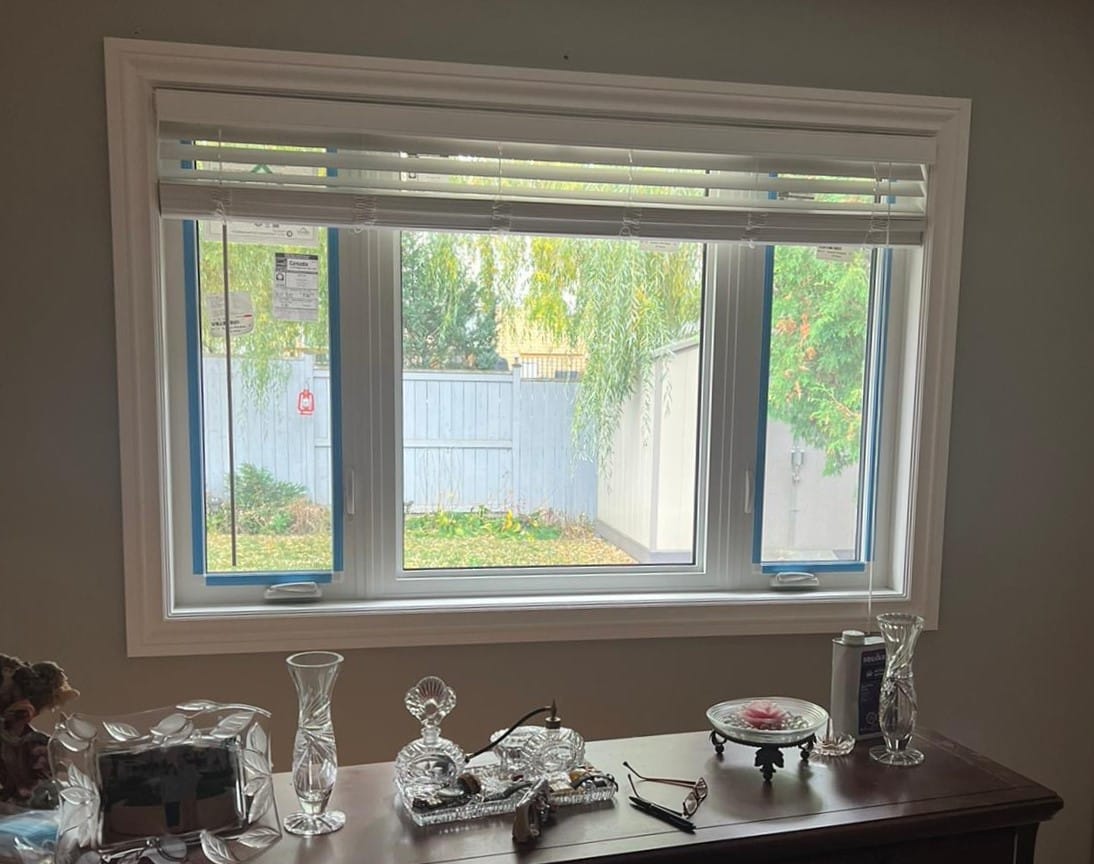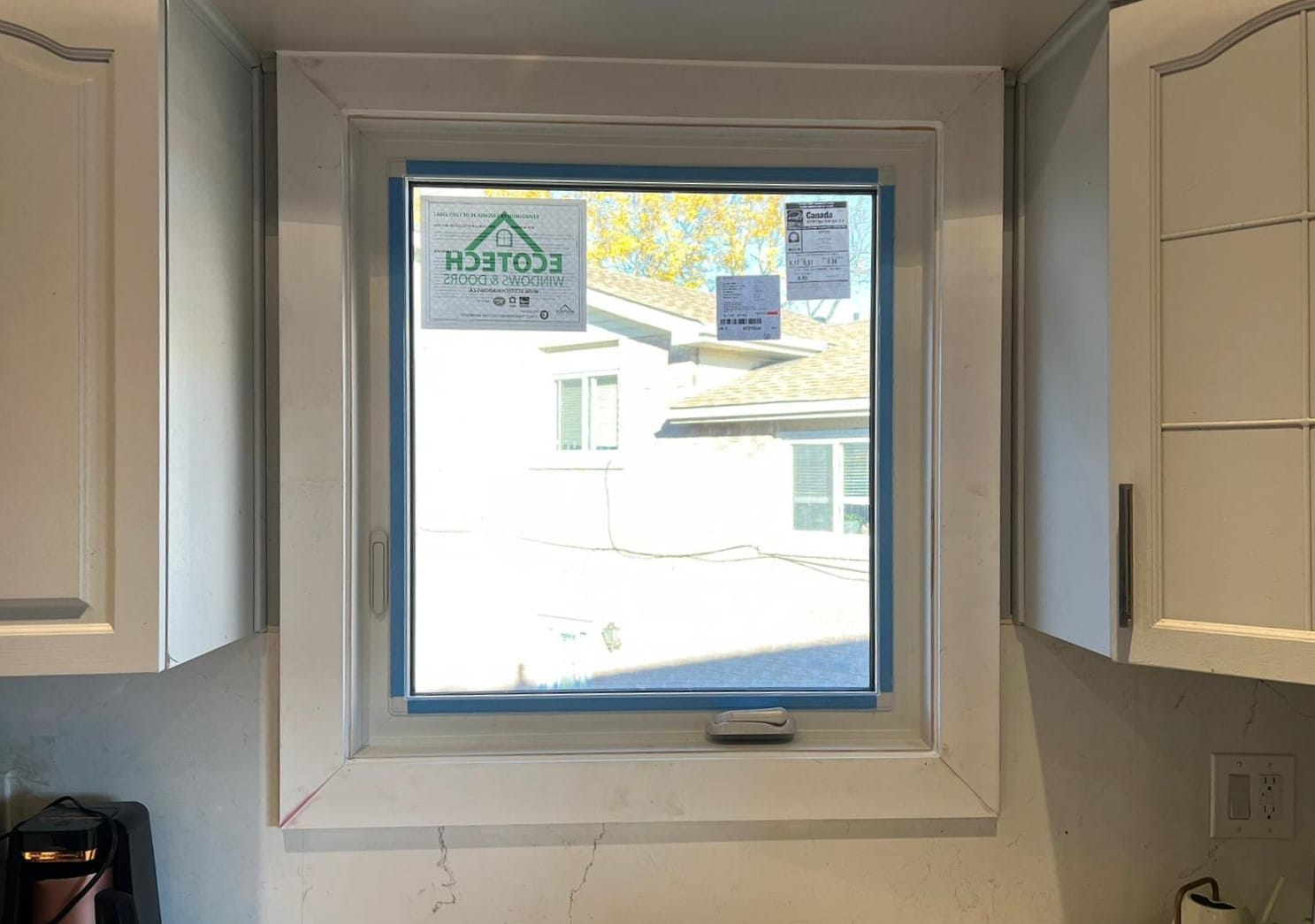Casement windows, with their distinctive design and versatile functionality, have become a hallmark of modern architecture. As homeowners increasingly seek not only aesthetic appeal but also energy efficiency, casement windows have risen in popularity. In this comprehensive guide, we delve into the intricacies of casement windows, exploring their history, advantages, and differences from other window types. This guide aims to provide an in-depth understanding of casement windows while highlighting their environmental benefits.

Picture Source – EcoTech Windows & Doors
What Does Casement Mean in Windows?
1. Unveiling the Casement Window Design
Casement windows, defined by their hinged design, offer a unique and practical solution for homeowners. The hinges, located on one side, enable the window sash to swing open like a door. This design not only facilitates smooth operation but also allows for a wider opening than traditional sliding or double-hung windows. The swinging motion provides excellent ventilation and easy access for cleaning, making casement windows a versatile choice for any home.
2. A Historical Perspective
Understanding the historical evolution of casement windows adds a layer of appreciation for their enduring charm. Originating in Tudor and Elizabethan architecture, these windows featured wooden frames and small glass panes. As architectural styles evolved, casement windows adapted, incorporating advancements in materials and manufacturing techniques. Today, the historical roots of casement windows coalesce with modern aesthetics, creating a timeless yet contemporary window design.
Also Read: 7 Considerations to Make Before Buying a Casement Window
Picture Source – EcoTech Windows & Doors
Why Are Casement Windows Better?
1. Superior Ventilation
Casement windows excel in providing optimal ventilation for homes. The entire window sash opens wide, allowing fresh air to circulate freely. This feature is particularly beneficial in warm climates, where the need for efficient airflow is paramount. The ability to capture breezes from multiple directions sets casement windows apart, creating a comfortable and well-ventilated living space.
2. Enhanced Energy Efficiency
Casement windows contribute significantly to energy efficiency. When closed, the sash creates a tight seal against the frame, minimizing drafts and preventing the loss of heated or cooled air. The result is a more stable indoor climate and reduced reliance on heating or cooling systems. Homeowners investing in casement windows often enjoy long-term savings on energy bills while reducing their environmental footprint.
3. Unobstructed Views
One of the notable aesthetic benefits of casement windows is the unobstructed view they offer. The absence of mullions or dividers allows for a seamless panorama of the outdoors. This feature is particularly appealing in homes with scenic views, providing an uninterrupted visual connection with the surrounding environment. Casement windows enhance the overall aesthetics of a space while maximizing natural light.
4. Security Features
Beyond their aesthetic and functional advantages, casement windows prioritize security. The hinge placement makes it challenging for intruders to force the window open from the outside. Additionally, modern casement windows are equipped with advanced locking mechanisms, further fortifying the home against unauthorized access. This combination of aesthetics, functionality, and security positions casement windows as a well-rounded choice for discerning homeowners.
Also Read: Energy Star Rated Casement Windows : Explaining Ratings and U-Factor
Picture Source – EcoTech Windows & Doors
What Is the Difference Between a Sash Window and a Casement Window?
1. Understanding Sash Windows
Sash windows, also known as double-hung windows, operate on a vertically sliding mechanism. The window consists of two panels, or sashes, which can move independently. This design allows for various ventilation options, as either the top or bottom sash can be opened or closed. Sash windows, with their classic charm, are often found in historic and traditional homes.
2. Contrasting Features of Casement Windows
While both sash and casement windows have their merits, the primary difference lies in their mode of operation. Casement windows pivot on hinges, opening outward with the assistance of a crank. This design provides a more expansive opening for ventilation, and the absence of a vertical divider offers unobstructed views. The contrast in functionality and aesthetics makes casement windows a popular choice for those seeking modernity and versatility.
Also Read: Corner Drive System for Casement Windows and Awning Windows
Picture Source – EcoTech Windows & Doors
What Is the Difference Between Casement and Hung Windows?
1. Casement vs. Single-Hung Windows
Single-hung windows share a vertical sliding mechanism with sash windows, but only the bottom sash is movable, while the top sash remains fixed. This design simplifies the window structure, resulting in a cost-effective option. However, the limited ventilation options may not match the versatility offered by casement windows, making them better suited for specific architectural preferences.
2. Casement vs. Double-Hung Windows
Double-hung windows, with both sashes’ movable, provide more flexibility in ventilation compared to single-hung windows. The balance between classic aesthetics and functionality makes double-hung windows an appealing choice. However, the wide opening and unobstructed views offered by casement windows often make them the preferred option for those prioritizing modern design and enhanced airflow.
Also Read: Egress Casement Windows: The Hinge Holds the Key to Everything
Picture Source – EcoTech Windows & Doors
Why Are Casement Windows More Expensive?
1. Premium Materials and Craftsmanship
Casement windows often feature premium materials such as solid wood, aluminum, or uPVC. The use of these materials not only enhances the window’s durability but also contributes to its aesthetic appeal. Meticulous craftsmanship further elevates the overall quality, resulting in a higher upfront cost. However, the investment in premium materials ensures longevity and a sophisticated finish.
2. Enhanced Energy Efficiency Features
The higher initial cost of casement windows can be attributed to their advanced energy-efficient features. Tight seals, durable materials, and cutting-edge technology contribute to their superior performance in terms of insulation. Homeowners often find that the initial investment pays off over time through reduced energy bills and a more comfortable indoor environment.
3. Customization Options
Casement windows offer a broad spectrum of customization options, allowing homeowners to tailor the windows to their specific needs and preferences. From size and style to additional features such as energy-efficient glazing or unique finishes, customization adds to the overall cost. The ability to create bespoke windows that seamlessly integrate with the architectural design of a home is a significant advantage for those who prioritize personalization.
Also Read: Window Casement: Features, Benefits, and More
Picture Source – EcoTech Windows & Doors
Which Is More Expensive: Casement or Sliding Windows?
1. Comparing Casement and Sliding Windows
When comparing the cost of casement and sliding windows, several factors come into play. Casement windows are generally considered more expensive due to their sophisticated design and enhanced functionality. The swinging mechanism, premium materials, and the potential for customization contribute to the higher upfront cost. In contrast, sliding windows, with their simpler structure, are a more budget-friendly alternative.
2. Long-Term Cost Considerations
While casement windows may require a higher upfront investment, their long-term benefits often justify the cost. The energy efficiency, durability, and potential for reduced maintenance costs contribute to long-term savings. Homeowners must view the expense as an investment in the overall comfort, aesthetics, and efficiency of their home, recognizing the value that casement windows bring over time.
Also Read: Best Casement Window Company Near Me
Picture Source – EcoTech Windows & Doors
Do Casement Windows Have to Have a Crank?
1. Traditional Crank Operation
The traditional operation of casement windows involves a crank mechanism. Usually located at the base of the window frame, the crank allows for easy and controlled opening and closing. This classic design not only adds a touch of vintage charm but also provides a practical and ergonomic solution for operating the window. The crank mechanism ensures precise control over the degree of window opening, allowing users to customize ventilation levels.
2. Modern Alternatives
While the traditional crank mechanism remains popular, modern casement windows offer alternative opening options. Some models feature push-out handles or even motorized systems for effortless operation. These alternatives cater to varying preferences and architectural styles, ensuring that casement windows can seamlessly integrate into any home design. The evolution of operating mechanisms reflects the adaptability of casement windows to contemporary living needs.
Also Read: Home Windows: Exploring the World with EcoTech Windows & Doors
Picture Source – EcoTech Windows & Doors
What Is the Typical Cost of a Casement Window?
1. Factors Influencing Costs
The cost of casement windows varies based on several factors:
a. Materials
The choice of materials significantly influences the cost. High-quality materials, such as solid wood or aluminum, may result in a higher upfront investment. The durability and aesthetic appeal of these materials contribute to the overall value of the windows.
b. Size
Larger windows generally cost more than smaller ones. Custom sizes may also incur additional charges, reflecting the precision required in designing and manufacturing windows tailored to specific dimensions.
c. Features
Additional features, such as energy-efficient glazing, security enhancements, and custom finishes, can contribute to the overall cost. Each added feature represents an investment in the functionality and aesthetics of the window.
d. Installation
Professional installation is crucial to ensure proper fitting and optimal performance. While it adds to the initial cost, investing in expert installation prevents issues that may arise from improper installation, ensuring the longevity and functionality of the windows.
2. Cost Comparison with Other Window Types
When comparing the cost of casement windows with other window types, it’s essential to consider the long-term benefits. While casement windows may have a higher upfront cost, their energy efficiency, durability, and potential for customization contribute to overall cost savings over time. Homeowners should view the cost as an investment in the comfort, aesthetics, and efficiency of their home, recognizing the value that casement windows bring to their living spaces.
Conclusion
In conclusion, casement windows offered by EcoTech Windows & Doors are a testament to the fusion of craftsmanship, functionality, and environmental responsibility. From their historical roots to their modern adaptations, casement windows continue to be a symbol of timeless elegance. The advantages of superior ventilation, energy efficiency, unobstructed views, and enhanced security make casement windows a holistic choice for homeowners seeking a perfect blend of form and function.
At EcoTech Windows & Doors, we take pride in offering casement windows that embody precision, sustainability, and aesthetic appeal. Elevate your living space with EcoTech casement windows, where each window is not just a functional element but a work of art that enhances the overall ambiance of your home. Explore the possibilities of a more comfortable, energy-efficient, and aesthetically pleasing living environment with our premium casement windows.
3 Frequently Asked Questions for Casement Windows
Q1. Are Casement Windows Suitable for All Climates?
Yes, casement windows are versatile and suitable for a variety of climates. Their design allows for optimal ventilation, making them particularly advantageous in warmer regions. The wide opening created when the window is fully swung open facilitates excellent airflow, helping to cool down interiors during hot seasons. Additionally, when closed, the tight seal of casement windows provides effective insulation, making them equally suitable for colder climates. It’s essential to consider the specific needs and preferences of your home when choosing windows, and casement windows offer a well-rounded solution adaptable to various environmental conditions.
Q2. Do Casement Windows Require More Maintenance Than Other Window Types?
Casement windows are relatively low-maintenance, and their design contributes to ease of care. The absence of multiple sashes or tracks minimizes the areas where dirt and debris can accumulate. Regular cleaning of the glass and frame, along with occasional lubrication of the hinges and moving parts, is typically sufficient to keep casement windows in optimal condition. Additionally, the materials used in modern casement windows, such as uPVC or aluminum, are known for their durability and resistance to weathering, reducing the need for extensive maintenance. While the specific maintenance requirements may vary based on the materials chosen, casement windows generally offer a practical and manageable upkeep routine.
Q3. Can Casement Windows Be Installed in Historic or Traditional Homes?
Yes, casement windows can be successfully installed in historic or traditional homes without compromising their architectural integrity. While casement windows are often associated with modern design, manufacturers offer a variety of styles and materials that can mimic the appearance of traditional windows. Wooden casement windows, for example, can seamlessly blend with the aesthetic of historic homes, providing the benefits of modern functionality while preserving the charm of the original architecture. It’s crucial to work with experienced professionals who understand the nuances of historic homes to ensure that the installation is done in a way that respects the character and authenticity of the property.










